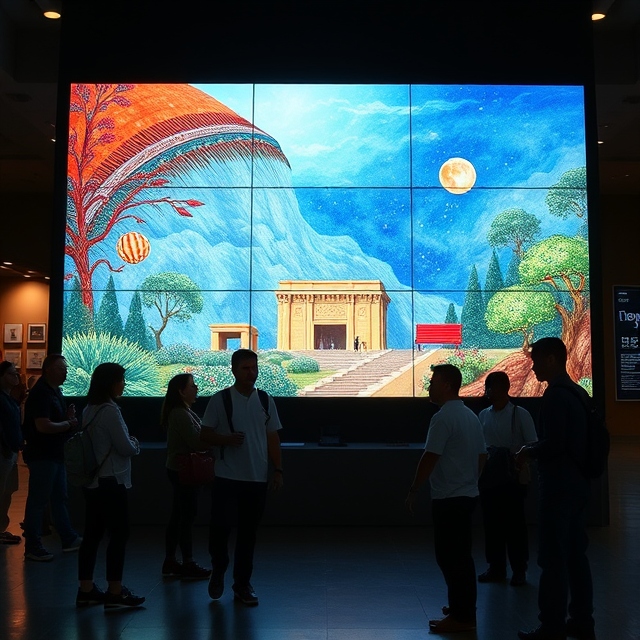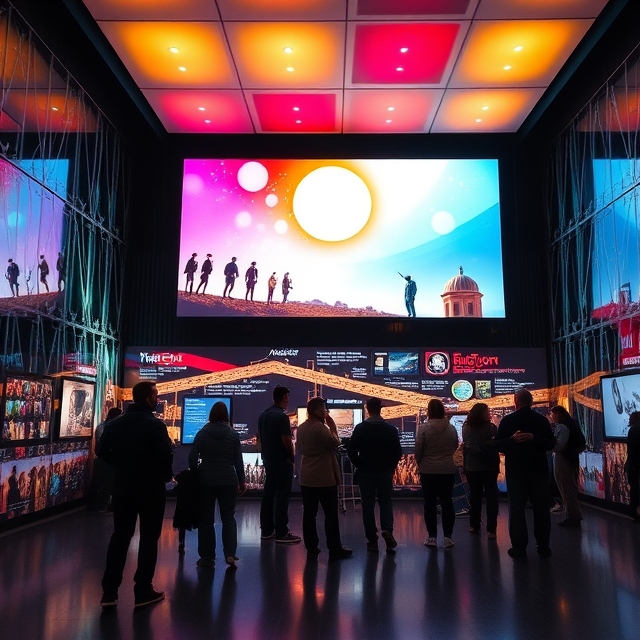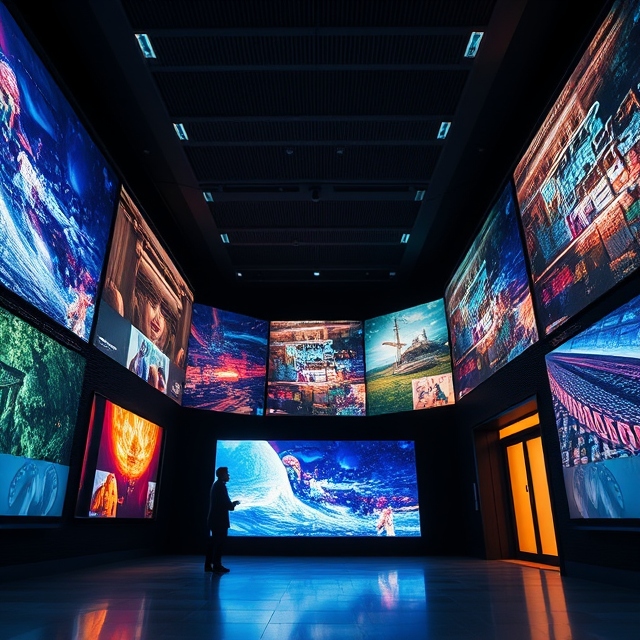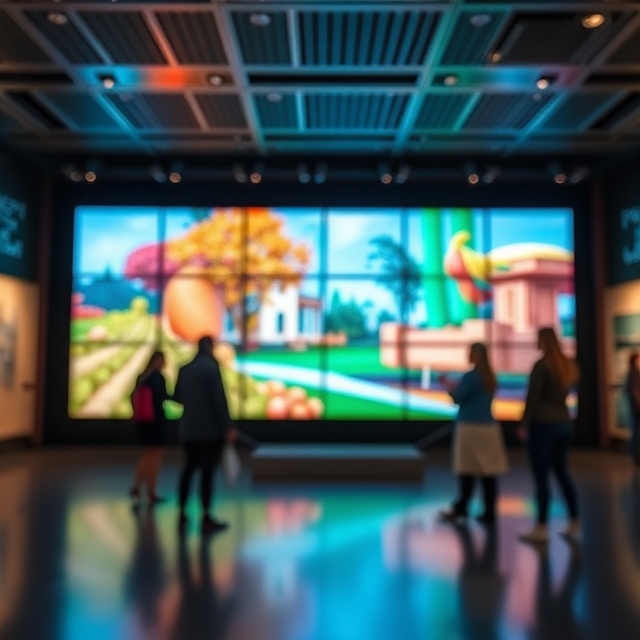- Home
- About Us
- Industries
- Agritech & Smart Farming
- Aquariums & Zoos
- Art & Cultural Exhibitions
- Automotive & Transportation
- Broadcasting & News
- Construction & Real Estate
- Corporate & Offices
- Cultural Heritage & Preservation
- Cybersecurity Operations
- Digital Content Creation & Media
- E-commerce & Online Retail
- Education
- Energy & Utilities
- Entertainment & Media
- Entertainment Arcades & Amusement
- Environmental Monitoring
- Event Management & Conferences
- Fashion & Apparel Retail
- Fashion Retail & E-commerce
- Finance & Banking
- Financial Trading & Stock Exchanges
- Fitness & Wellness
- Food & Beverage
- Food Processing & Manufacturing
- Gaming, Casinos, & Hospitality
- Government & Public Spaces
- Healthcare
- Hospitality & Event Venues
- Insurance
- Legal & Judicial
- Libraries & Community Centers
- Logistics & Supply Chain
- Luxury Cruise & Maritime
- Manufacturing & Industrial
- Meteorology & Climate Research
- Military & Defense
- Mining & Extraction
- Museums & Cultural Centers
- Non-Profit Organizations
- Oil & Gas Industry
- Professional Training & Development
- Public Health & Awareness
- Public Parks & Recreation Areas
- Public Safety & Law Enforcement
- Public Transportation
- Rehabilitation Centers
- Religious & Worship Spaces
- Renewable Energy
- Retail & Shopping Malls
- Retail Banking
- Security & Surveillance
- Social Media & Digital Marketing
- Sports & Stadiums
- Smart Cities & Urban Planning
- Supply Chain & Inventory
- Television & Film Production
- Travel & Hospitality
- FAQ
- Contact Us
- Home
- About Us
- Industries
- Agritech & Smart Farming
- Aquariums & Zoos
- Art & Cultural Exhibitions
- Automotive & Transportation
- Broadcasting & News
- Construction & Real Estate
- Corporate & Offices
- Cultural Heritage & Preservation
- Cybersecurity Operations
- Digital Content Creation & Media
- E-commerce & Online Retail
- Education
- Energy & Utilities
- Entertainment & Media
- Entertainment Arcades & Amusement
- Environmental Monitoring
- Event Management & Conferences
- Fashion & Apparel Retail
- Fashion Retail & E-commerce
- Finance & Banking
- Financial Trading & Stock Exchanges
- Fitness & Wellness
- Food & Beverage
- Food Processing & Manufacturing
- Gaming, Casinos, & Hospitality
- Government & Public Spaces
- Healthcare
- Hospitality & Event Venues
- Insurance
- Legal & Judicial
- Libraries & Community Centers
- Logistics & Supply Chain
- Luxury Cruise & Maritime
- Manufacturing & Industrial
- Meteorology & Climate Research
- Military & Defense
- Mining & Extraction
- Museums & Cultural Centers
- Non-Profit Organizations
- Oil & Gas Industry
- Professional Training & Development
- Public Health & Awareness
- Public Parks & Recreation Areas
- Public Safety & Law Enforcement
- Public Transportation
- Rehabilitation Centers
- Religious & Worship Spaces
- Renewable Energy
- Retail & Shopping Malls
- Retail Banking
- Security & Surveillance
- Social Media & Digital Marketing
- Sports & Stadiums
- Smart Cities & Urban Planning
- Supply Chain & Inventory
- Television & Film Production
- Travel & Hospitality
- FAQ
- Contact Us

Museums & Cultural Centers
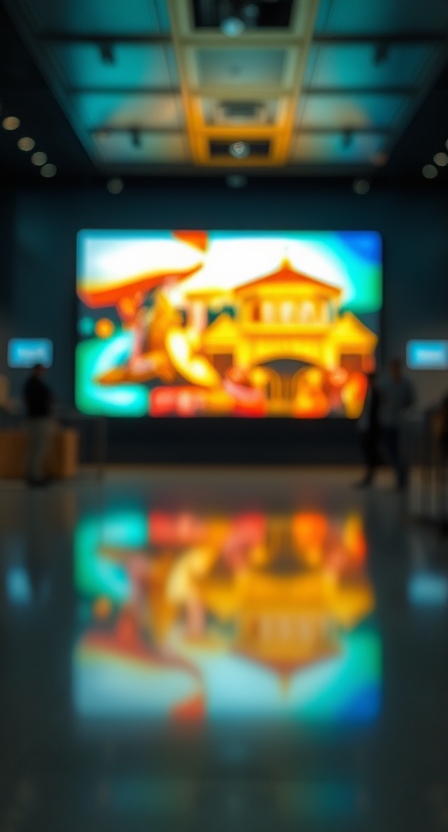
Uses Of Led Display For Museums & Cultural Centers
Active LED displays have become an essential tool for museums and cultural centers, helping to create engaging, interactive environments that enhance the visitor experience. By offering vibrant visuals, dynamic content, and educational features, LED displays can transform exhibitions, streamline visitor navigation, and promote cultural awareness in innovative ways.
Benefits of Active LED Displays in Museums and Cultural Centers
- Enhanced Visual Impact:
LED displays offer high-definition visuals with vibrant colors, perfect for showcasing artwork, historical artifacts, and multimedia presentations in a captivating way. - Interactivity:
Interactive LED displays can allow visitors to explore exhibits in a more hands-on way, providing deeper engagement with the content and enhancing learning experiences. - Real-Time Content Updates:
LED screens can be easily updated to reflect changing exhibitions, event schedules, or special promotions, ensuring content is always fresh and relevant. - Energy Efficiency:
LED technology is energy-efficient, making it an ideal choice for museums and cultural centers that operate for long hours and need to minimize operating costs. - Durability and Longevity:
With their long lifespan and ability to perform in varying conditions, LED displays are a great fit for museums and cultural centers that require reliable, long-term solutions.
Applications in Museums and Cultural Centers
- Digital Exhibits and Art Displays
Purpose: Use LED screens to display artwork, historical information, or rotating digital exhibits.
Content Ideas:
- Showcase digital art, augmented reality (AR) installations, or video art as part of an exhibit.
- Display high-resolution images of rare or fragile artifacts, allowing visitors to view details they may not otherwise see.
- Use LED panels to tell stories or provide context around historical events, highlighting different perspectives with engaging multimedia content.
- Interactive Learning Stations
Purpose: Engage visitors in interactive learning experiences that complement physical exhibits.
Content Ideas:
- Install touch-enabled LED displays where visitors can explore timelines, historical data, or virtual tours of artifacts.
- Provide information on the creation process of artworks or the historical significance of exhibits with videos, audio narrations, or interactive quizzes.
- Set up educational games or challenges on large interactive screens to make learning fun, especially for children or school groups.
- Virtual Tours and Augmented Reality (AR) Experiences
Purpose: Enhance the exploration of exhibits using immersive technologies like AR.
Content Ideas:
- Use LED screens to provide virtual tours, guiding visitors through different rooms or cultural spaces with informative and engaging content.
- Integrate AR experiences where visitors can use their smartphones or special devices to view additional information overlaid on exhibits through LED screens.
- Display 3D models of ancient artifacts, allowing visitors to rotate, zoom in, and explore them from multiple angles.
- Event and Program Announcements
Purpose: Inform visitors about upcoming events, performances, and exhibitions.
Content Ideas:
- Display information about upcoming gallery talks, performances, or film screenings.
- Use LED displays to promote special events, such as temporary exhibits, workshops, or collaborations with local artists.
- Show live updates about ongoing events or special promotions in museum shops or cafes.
- Wayfinding and Visitor Assistance
Purpose: Guide visitors through large spaces or help them find specific exhibits.
Content Ideas:
- Install interactive maps and wayfinding displays to help visitors navigate large or complex museums and cultural centers.
- Display opening hours, restrooms, café locations, or emergency exits, improving the overall experience and accessibility.
- Provide real-time updates on crowd density or the status of exhibitions to help guests plan their visit accordingly.
- Cultural History and Contextual Storytelling
Purpose: Offer deeper insights into exhibits by providing cultural and historical context.
Content Ideas:
- Use LED screens to display documentaries, historical footage, or expert interviews related to the exhibits, offering visitors a richer understanding.
- Integrate localized content, such as stories from local communities, artists, or historians, to provide personal or regional perspectives on exhibits.
- Present “behind-the-scenes” content, such as the process of setting up exhibits, the research involved, or interviews with curators and artists.
- Immersive Multimedia Shows
Purpose: Create multimedia experiences that immerse visitors in the exhibit’s theme.
Content Ideas:
- Use large LED displays for immersive video projections or light shows that complement the exhibit’s theme, whether it’s an art display, historical event, or cultural festival.
- Create multi-sensory experiences by combining LED displays with sound, motion, and interactive elements that transport visitors into the exhibit’s world.
- Digital Archives and History Exploration
Purpose: Allow visitors to explore vast historical archives and collections digitally.
Content Ideas:
- Display interactive digital archives that allow visitors to explore documents, photos, or videos in a searchable, easy-to-navigate format.
- Show old manuscripts, photographs, and films in high resolution, giving visitors access to rare content that may otherwise be too fragile to display physically.
Features
- List Item
- List Item
- List Item
- List Item
Advantages
- List Item
- List Item
- List Item
- List Item
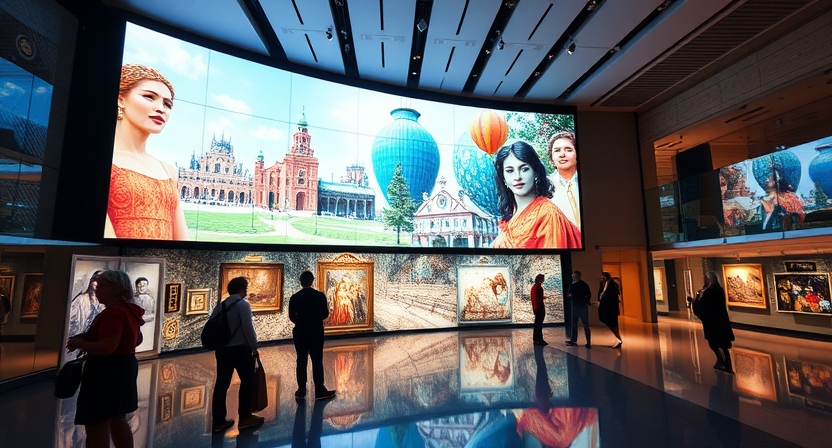
Placement Tips for Museums and Cultural Centers
- Entrance and Foyer Areas:
Place large LED displays at the entrance to introduce visitors to current exhibits, upcoming events, or museum highlights, setting the tone for the visit. - Exhibition Halls:
Install LED screens within exhibitions to complement physical displays with dynamic content, videos, or interactive learning experiences. - Interactive Stations:
Set up touch-enabled LED displays throughout the museum for visitors to interact with exhibits, access additional content, or participate in educational activities. - Common Areas (Cafes, Gift Shops):
Place smaller LED displays in high-traffic areas to promote museum news, upcoming events, or highlight special merchandise available in the gift shop. - Outdoor Spaces (for Cultural Centers):
Use outdoor LED screens to display event information, performances, or live cultural activities, creating an inviting atmosphere and attracting passersby.
Conclusion
Active LED displays offer significant advantages to museums and cultural centers by enhancing the learning experience, improving visitor engagement, and providing flexibility for dynamic, real-time content. These displays not only improve the accessibility and interactivity of exhibits but also help cultural institutions promote their programs and keep visitors informed. By embracing this technology, museums and cultural centers can offer more immersive, educational, and engaging experiences for their audiences.
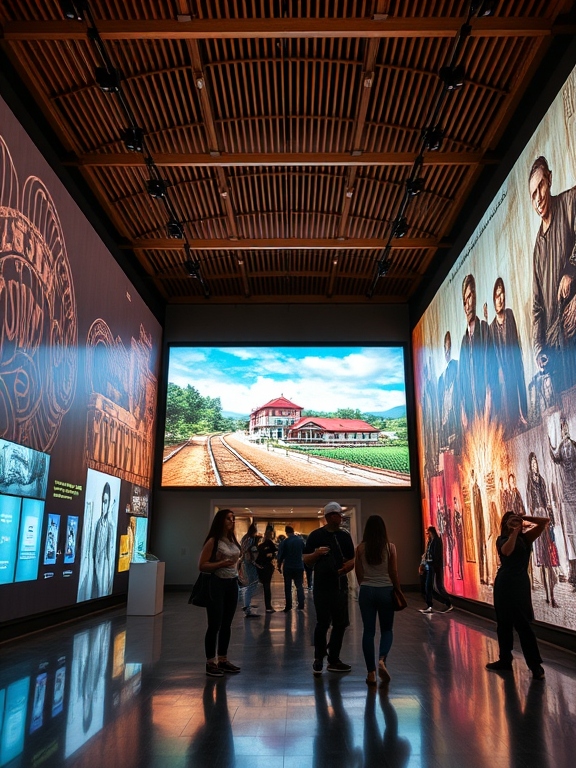
illuminits LED Walls?
Technology
There are three primary LED video wall technologies: ultra-narrow bezel LCD, rear-projection cubes, and direct-view LED displays. Ultra-narrow bezel LCD is the most cost-effective option.
Size
The great thing about illuminits video walls is that they are modular, so you can get them in any size or aspect ratio you want.
Support
The heavier the video wall system becomes, the more panels there are. This puts additional strain on the infrastructure that supports it. illuinits offers the best in-time assistance.
Service
Even high-definition video walls can have problems. This can be a minor or major issue. As a result, Aero provides a variety of comprehensive service packages that ensure minimal downtime at a low cost. Types Of LED Displays
